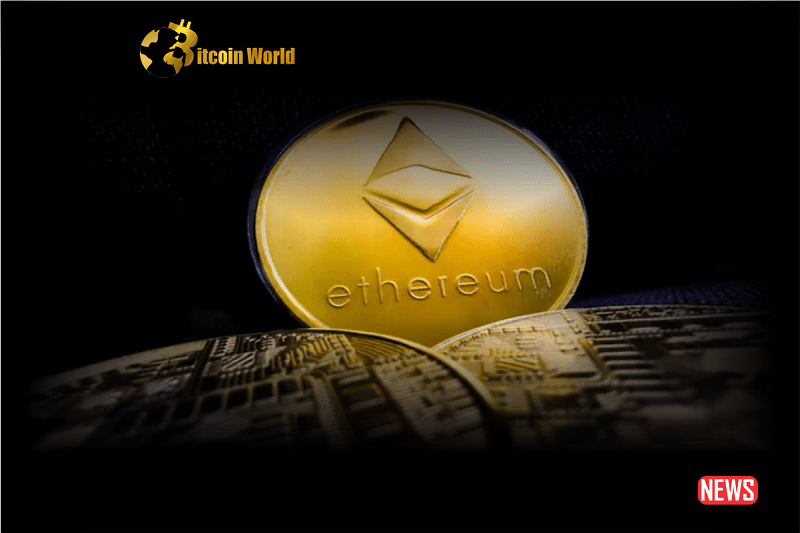Are you keeping an eye on Ethereum’s next move? Lately, the buzz around the crypto sphere hints at a shift in sentiment, particularly within the Ethereum futures market. Recent data points towards a growing bearish trend, and if you’re trading or simply interested in the crypto landscape, this is something you’ll want to understand.
What’s the Buzz About Ethereum’s Buy-Sell Dynamics?
Think of the buy-sell ratio as a temperature gauge for the market’s mood. For Ethereum’s futures, this gauge is showing a distinct cool-down. Specifically, the taker buy-sell ratio, a key indicator of whether traders are aggressively buying or selling, has plunged to its lowest point this year, hitting that mark on August 28th. CryptoQuant data confirms this, painting a picture of increasing sell orders in the futures market.
Decoding the Taker Buy-Sell Ratio: A Trader’s Compass
Ever wondered how to decipher the undercurrents of the futures market? The taker buy-sell ratio is your friend here. Let’s break it down:
- Ratio Above 1: Imagine more people are rushing to buy than sell. This pushes the ratio above 1, signaling strong buying momentum.
- Ratio Below 1: Now picture more traders eager to sell. This pulls the ratio below 1, indicating a stronger inclination to sell.
CryptoQuant analyst ‘Greatest_Trader’ highlighted this trend, noting the consistent decline in Ethereum’s taker buy-sell ratio over the past few months. This downward trajectory culminated in a yearly low, reinforcing the bearish sentiment among those trading Ethereum futures.
Is Open Interest Echoing the Bearish Sentiment?
Absolutely! Ethereum’s futures open interest, which represents the total number of outstanding contracts, provides further evidence. Currently at $4.67 billion, it’s also sitting at its lowest point this year, according to Coinglass data. The slide began around April 19th, resulting in a significant 36% decrease. Interestingly, this drop coincided with Ethereum’s struggle to break back above the $2000 psychological barrier.
ETH’s Price Range: Stuck in Neutral?
For the past 138 days, Ethereum’s price has been navigating a narrow channel between $1600 and $1800. This price consolidation, coupled with the shrinking open interest, suggests that traders are becoming more cautious, reducing their speculative bets amidst a less enthusiastic market.
What’s Fueling the Decline in Open Interest?
Several factors could be at play here. Let’s explore some possibilities:
- Seasonal Lulls: Think of the summer months as a ‘downtime’ for some markets. The crypto market might experience similar seasonal effects, leading to lower trading activity.
- Sideways Market Blues: Since June, the broader crypto market has largely moved sideways, lacking significant upward price movements. This can make traders hesitant to open new positions.
- Cautious Stance: The lack of clear price direction might be prompting traders to reassess their positions and adopt a more conservative approach.
The Curious Case of Positive Funding Rates
Here’s a fascinating twist: even with the decline in open positions, funding rates across major crypto exchanges for Ethereum have remained largely positive. Apart from a notable dip on March 12th, funding rates have generally favored long positions throughout the year.
What Do Positive Funding Rates Mean?
Positive funding rates indicate that traders longing (betting on the price going up) are willing to pay a fee to those shorting (betting on the price going down). This suggests that despite the sideways price action and bearish futures market indicators, there’s still a prevailing demand for long positions.
Key Takeaways: Navigating the Ethereum Futures Landscape
- Bearish Signals: Ethereum’s taker buy-sell ratio has hit a yearly low, indicating a preference for selling in the futures market.
- Open Interest Decline: The decreasing open interest further supports the bearish sentiment, suggesting traders are reducing their speculative positions.
- Price Consolidation: ETH’s price has been range-bound, reflecting market uncertainty and potentially contributing to the open interest decline.
- Positive Funding Rates: Despite the bearish indicators, positive funding rates suggest continued demand for long positions, adding a layer of complexity to the current market picture.
In Conclusion: A Market in Transition
Ethereum’s futures market is currently navigating a phase characterized by bearish signals and declining open interest. The prolonged price consolidation suggests a cautious market, where traders are stepping back from aggressive bets. While the taker buy-sell ratio paints a clear picture of increased selling pressure, the persistent positive funding rates offer a contrasting perspective, indicating that the demand for long positions hasn’t entirely waned. As the market continues to evolve, keeping a close watch on these key metrics will be crucial for understanding Ethereum’s next potential move.
Disclaimer: The information provided is not trading advice, Bitcoinworld.co.in holds no liability for any investments made based on the information provided on this page. We strongly recommend independent research and/or consultation with a qualified professional before making any investment decisions.


